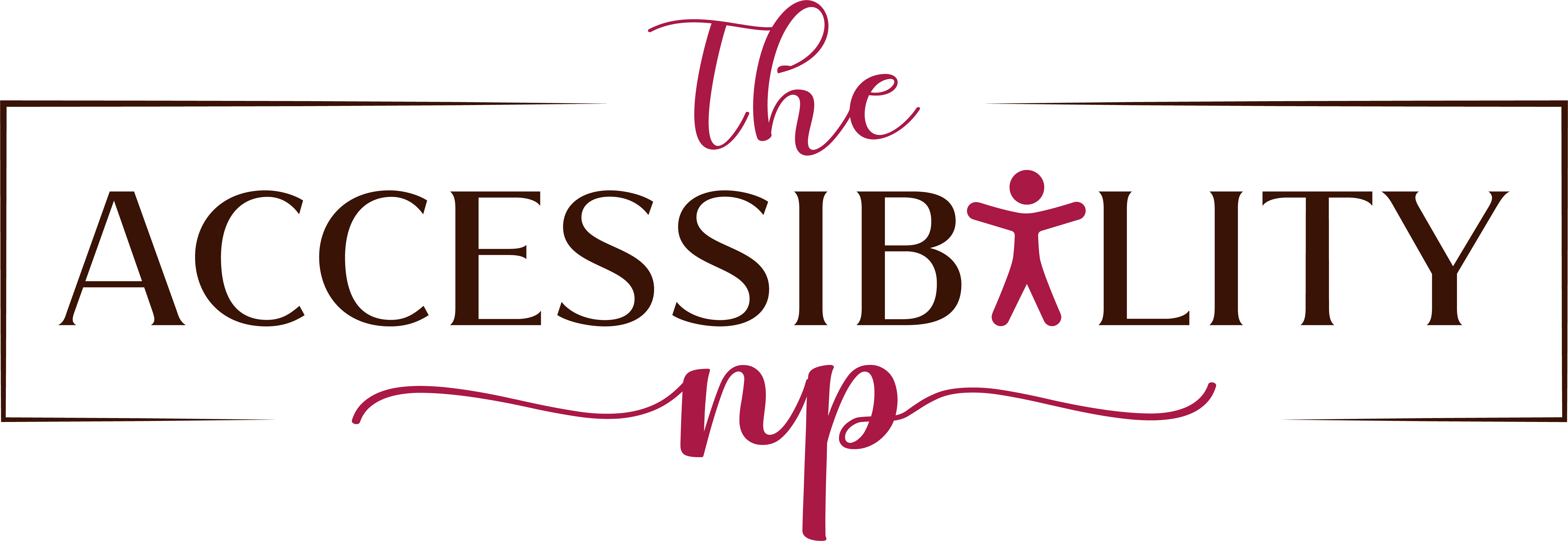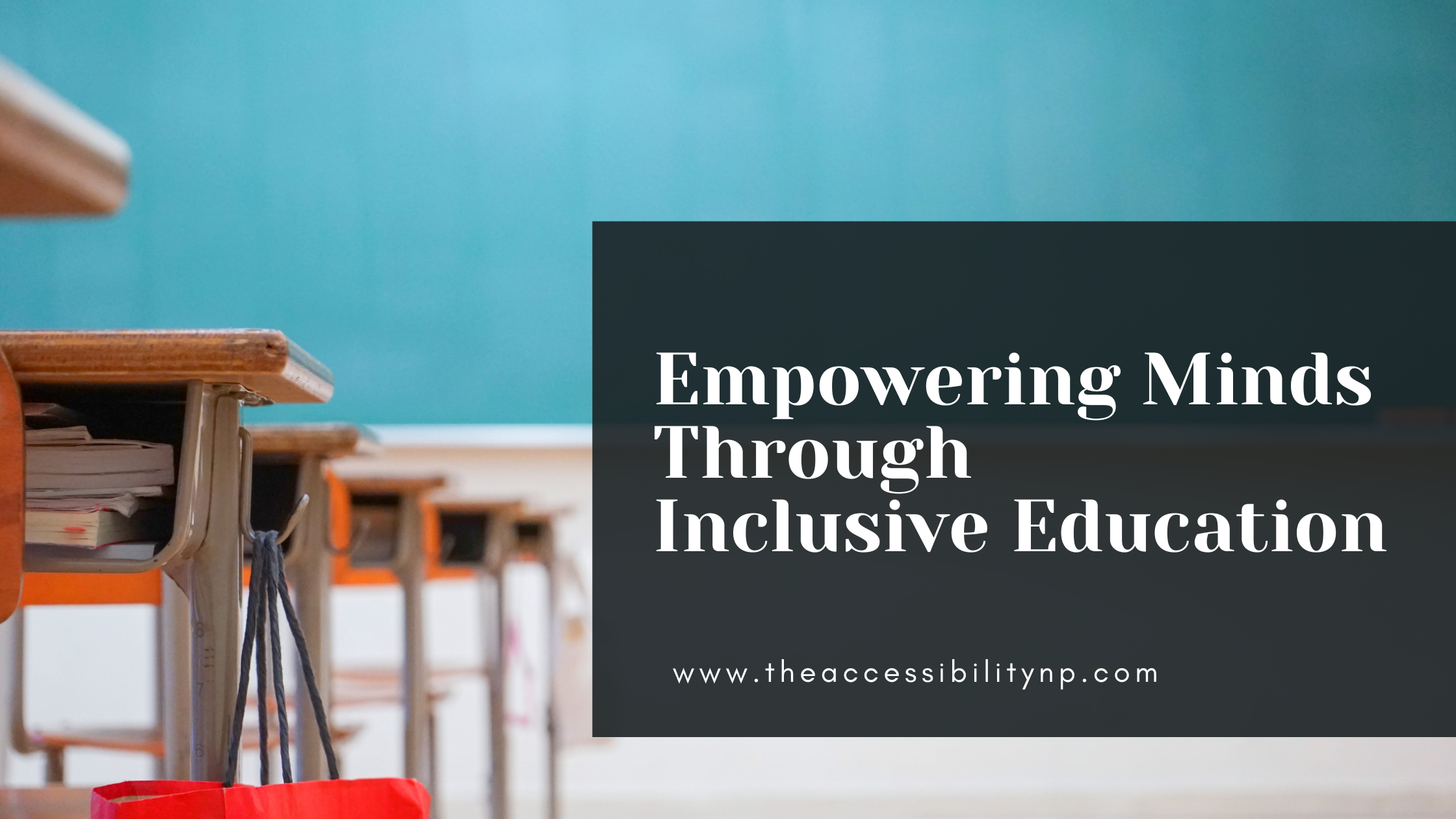As we continue to make progress toward a more inclusive society, it’s important to tackle and dispel the persistent myths surrounding disabilities and inclusive education. Despite the advancements we’ve achieved, many misconceptions still linger, potentially hindering our efforts to create the warm and understanding environment everyone deserves. Let’s explore some of these common myths, debunk them together, and work toward building a truly inclusive future for all.
Myth 1: Disabilities Are Always Visible
Have you ever heard the saying, “Don’t judge a book by its cover”? This applies so perfectly when it comes to disabilities. It’s easy to assume that disabilities are always visible, but that’s far from the truth. Some disabilities, like chronic pain, autism, ADHD, and mental health conditions, might not be apparent at first glance, yet they’re just as real as any visible disability.
For more on understanding invisible disabilities, click here.
It’s important to remember that just because someone looks fine on the outside doesn’t mean they aren’t facing challenges. By acknowledging that disabilities can be invisible, we can be more compassionate and supportive in our interactions, ensuring that everyone feels seen and understood.
Myth 2: Disabled Students Can’t Achieve Academic Success
Let’s clear something up: being disabled doesn’t mean a student can’t succeed academically. Unfortunately, the myth that disabled students can’t achieve the same level of success as their non-disabled peers still lingers. This misconception is based on outdated stereotypes that assume disabilities equate to lower intelligence or an inability to learn.
The truth is, with the right support, accommodations, and inclusive teaching practices, disabled students can excel just like any other student. Inclusive education is all about recognizing and celebrating the diverse ways in which students learn. When we focus on abilities rather than limitations, we open the door to endless possibilities for success.
Myth 3: Inclusive Education Lowers Academic Standards
Some people worry that including disabled students in general education classrooms means lowering the bar for everyone. This couldn’t be further from the truth. Inclusive education doesn’t dilute the quality of learning; instead, it enriches the experience for all students by fostering a learning environment that is adaptable and responsive to everyone’s needs.
To learn more about the benefits of inclusive education, read this article from UNICEF.
When teachers use inclusive practices, they’re actually raising the standard by creating lessons that engage and challenge all students. And when students of all abilities learn together, they gain so much more than just academic knowledge—they learn empathy, collaboration, and how to thrive in a diverse world.
Myth 4: Disabled Individuals Are Inspirational Simply Because They Are Disabled
We all love a good story of triumph, but it’s important to be mindful of how we frame those stories. Often, disabled individuals are seen as inspirational just because they are disabled. While it’s wonderful to celebrate achievements, it’s equally important to see disabled people as whole individuals with dreams, goals, and accomplishments that stand on their own.
Rather than viewing someone as inspirational for merely existing, let’s focus on celebrating their successes in the same way we would for anyone else. Everyone deserves to be recognized for who they are, not just for their ability to navigate the challenges that life throws at them.
Myth 5: Accommodations Give Disabled Students an Unfair Advantage
Let’s think about this one for a moment. Imagine if you were asked to run a race, but you were the only one wearing heavy boots while everyone else had sneakers. Wouldn’t it be fair to level the playing field? That’s what accommodations do—they ensure that everyone has an equal shot at success.
Accommodations like extended time on tests or access to assistive technology don’t give disabled students an unfair advantage; they simply provide the necessary support to ensure that these students can perform to the best of their abilities. It’s about equity, not advantage, and it’s a key component of creating an inclusive and fair educational environment.
Myth 6: Inclusive Education Is Too Expensive
There’s a common belief that making education inclusive costs too much money. However, viewing the costs associated with inclusive education as an investment rather than an expense can shift this perspective. Inclusive education benefits everyone by creating a learning environment that is diverse, supportive, and conducive to success for all students.
Moreover, when we invest in inclusive education, we’re also investing in the future. Early support for disabled students can reduce the need for more intensive (and costly) interventions later on. There are also many cost-effective ways to implement inclusive practices, such as using Universal Design for Learning (UDL), which benefits all students, not just disabled ones.
Myth 7: Disabled Students Disrupt the Learning Environment
It’s understandable to be concerned about maintaining a productive classroom environment, but the idea that disabled students are inherently disruptive is a myth. In reality, with the right support and strategies in place, all students, including disabled ones, can contribute positively to the classroom dynamic.
Inclusive education involves creating a classroom environment that is supportive and responsive to everyone’s needs. This might include implementing positive behavior support, creating sensory-friendly spaces, or using individualized instruction. These practices not only benefit disabled students but also enhance the learning experience for everyone by fostering a more inclusive and understanding community.
Myth 8: Disabled People Are Dependent and Unable to Live Independently
We all have different levels of independence, and the same is true for disabled people. The myth that disabled individuals are inherently dependent or unable to live independently is rooted in stereotypes that are both outdated and harmful.
Many disabled people live independently, often with the support of assistive technology or accommodations that help them navigate their daily lives. Independence doesn’t mean doing everything alone—it means having control over your own life and making decisions that align with your goals and values. By providing the right support, we can help ensure that everyone has the opportunity to live as independently as they choose.
Myth 9: Inclusive Education Is Only About Physical Access
When we talk about inclusive education, it’s easy to think solely about physical accessibility—like ramps, elevators, and accessible restrooms. But true inclusion goes much deeper than that. While physical access is important, inclusive education is also about ensuring that all students feel valued, supported, and included in every aspect of their education.
This means adapting teaching methods, materials, and assessments to meet the diverse needs of all students. It also involves fostering a school culture that celebrates diversity, promotes understanding, and makes every student feel like they belong. Inclusive education is about creating a welcoming environment where everyone has the chance to thrive.
Myth 10: Disabled People Are a Burden on Society
This is perhaps one of the most damaging myths of all—the idea that disabled people are a burden on society. This misconception not only devalues disabled individuals but also ignores the many ways in which they contribute to our communities.
Disabled people are artists, educators, scientists, entrepreneurs, and so much more. They bring unique perspectives, talents, and experiences that enrich our world. The true burden lies in the barriers that prevent disabled people from fully participating in society. By removing these barriers and promoting inclusion, we create a more just and equitable world for everyone.
For more information on the importance of accessibility and inclusion, visit this resource.
Embracing a More Inclusive Future
Debunking these common myths about disabilities and inclusive education is an important step toward building a more understanding and welcoming society. When we challenge misconceptions and open our hearts and minds to the diverse experiences of others, we create a world where everyone has the opportunity to thrive.
Inclusive education isn’t just about accommodating disabled students—it’s about creating a learning environment where diversity is celebrated, and everyone feels valued. As we move forward, let’s commit to fostering a more inclusive future where every individual, regardless of their abilities, has the chance to succeed
Until next Monday, stay connected and keep advocating!

